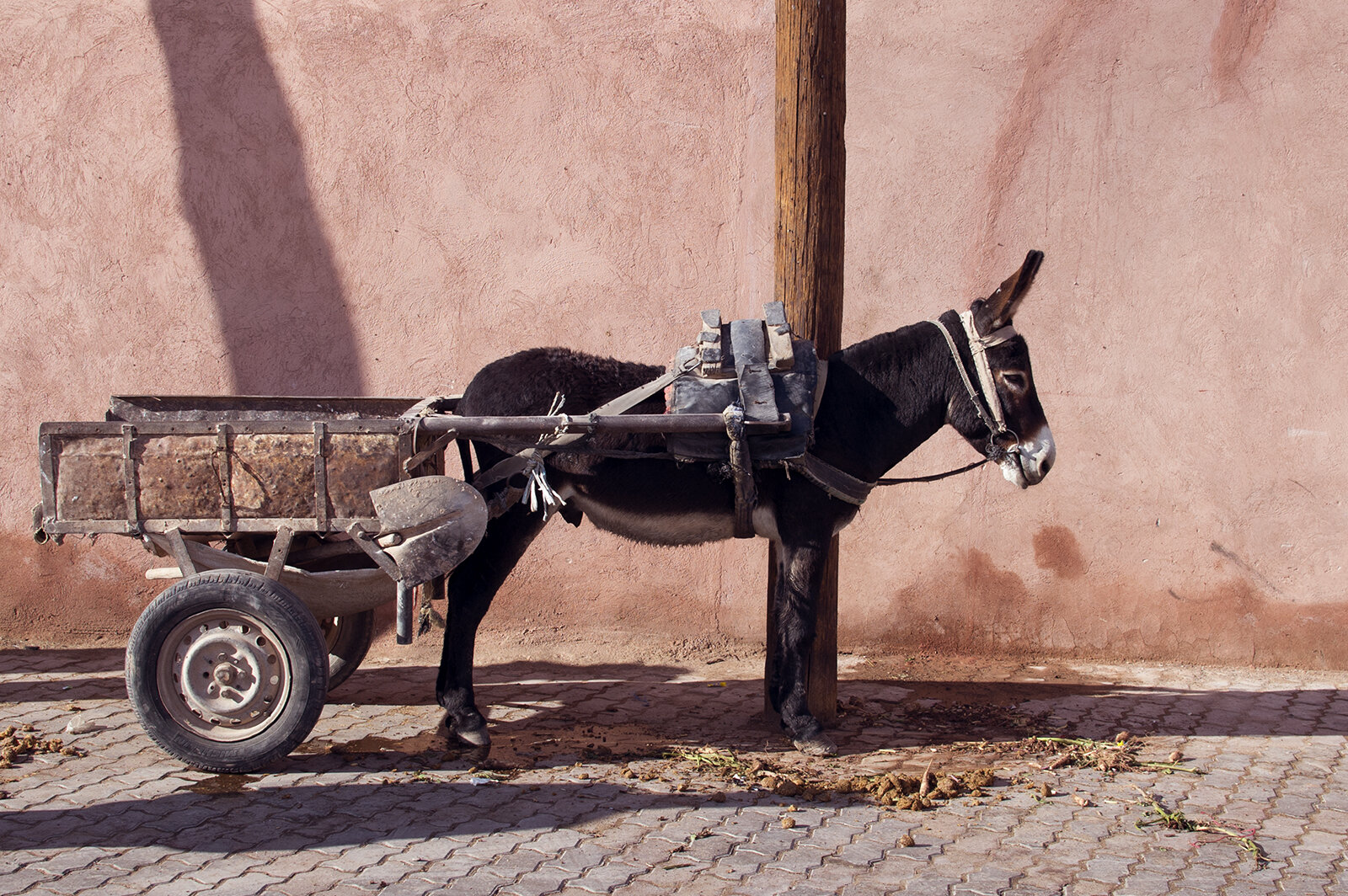In many places around the world, animals are forced to work and are used as instruments to do farm labours.
Although machinery has shifted almost all this kind of exploitation in our western societies, pack animals and animals for transport of goods and people are still used.
Horses, donkeys, mules and other equine, besides camels, elephants or oxen, have been traditionally employed as ‘beasts of burden’, forced to carry heavy bundles on their back or pull carts with cargoes of hundreds of kilos.
These noble and docile animals endure shameful stocks and are used until their mistreated bodies, exhausted after years of forced labour, are no longer able to serve their exploiters.
Then, a lot of them are “thrown away”,a euphemism that refers their murder, to avoid the expenses that an animal who is not profitable anymore causes. Another animal will replace it, bought like another tool of work to be destined to a life of slavery, abuse and privations.
In addition to the transport of heavy goods, animals are also used to transport people, as vehicle for everyday use in the lessdeveloped societies or used as a means of tourist tours.
In many localities of Spain, for example, visitants have the possibility of hiring displacements with horsedrawn carts. These animals are subject to long working hours, with high temperatures and without the possibility of some rest. Day by day they travel hundreds of kilometers pulling heavy carts which are incessantly full with the load of each tourist, while they are whipped with the reins to avoid them stopping.
In other cases, the routes are directly on the loins of the horses or donkeys that are offered as a tourist attraction. In African and Asian countries, camels and elephants are used for the same purposes, respectively.







